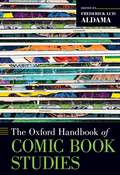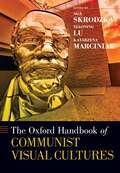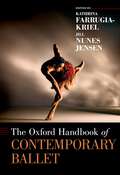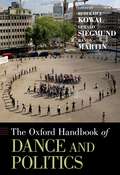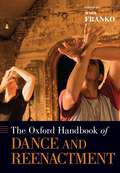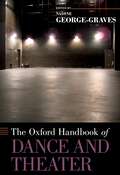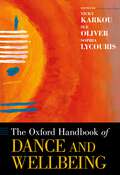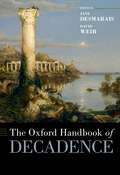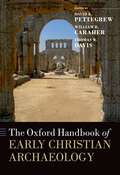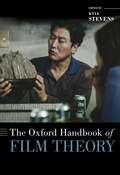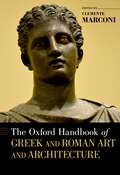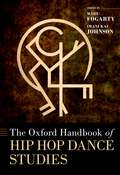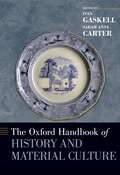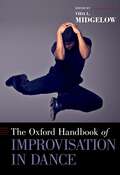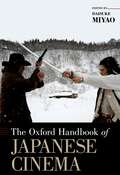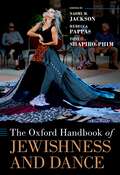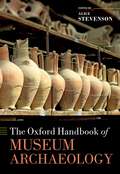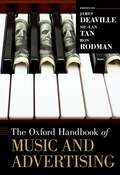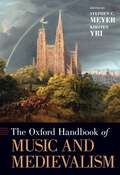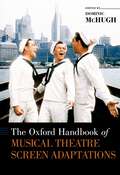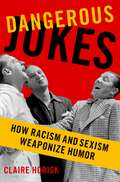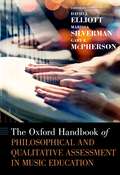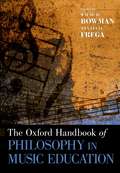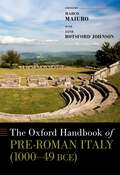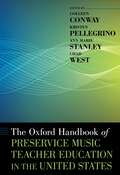- Table View
- List View
The Oxford Handbook of Comic Book Studies (Oxford Handbooks)
Comic book studies has developed as a solid academic discipline, becoming an increasingly vibrant field in the United States and globally. A growing number of dissertations, monographs, and edited books publish every year on the subject, while world comics represent the fastest-growing sector of publishing. The Oxford Handbook of Comic Book Studies looks at the field systematically, examining the history and evolution of the genre from a global perspective. This includes a discussion of how comic books are built out of shared aesthetic systems such as literature, painting, drawing, photography, and film. The Handbook brings together readable, jargon-free essays written by established and emerging scholars from diverse geographic, institutional, gender, and national backgrounds. In particular, it explores how the term "global comics" has been defined, as well the major movements and trends that will drive the field in the years to come. Each essay will help readers understand comic books as a storytelling form grown within specific communities, and will also show how these forms exist within what can be considered a world system of comics.
The Oxford Handbook of Communist Visual Cultures (Oxford Handbooks)
Stereotypes often cast communism as a defunct, bankrupt ideology and a relic of the distant past. However, recent political movements like Europe's anti-austerity protests, the Arab Spring, and Occupy Wall Street suggest that communism is still very much relevant and may even hold the key to a new, idealized future. In The Oxford Handbook of Communist Visual Cultures, contributors trace the legacies of communist ideology in visual culture, from buildings and monuments, murals and sculpture, to recycling campaigns and wall newspapers, all of which work to make communism's ideas and values material. Contributors work to resist the widespread demonization of communism, demystifying its ideals and suggesting that it has visually shaped the modern world in undeniable and complex ways. Together, contributors answer curcial questions like: What can be salvaged and reused from past communist experiments? How has communism impacted the cultures of late capitalism? And how have histories of communism left behind visual traces of potential utopias? An interdisciplinary look at the cultural currency of communism today, The Oxford Handbook of Communist Visual Cultures demonstrates the value of revisiting the practices of the past to form a better vision of the future.
The Oxford Handbook of Contemporary Ballet (Oxford Handbooks)
In distinction to many extant histories of ballet, The Oxford Handbook of Contemporary Ballet prioritizes connections between ballet communities as it interweaves chapters by scholars, critics, choreographers, and working professional dancers. The book looks at the many ways ballet functions as a global practice in the 21st century, providing new perspectives on ballet's past, present, and future. As an effort to dismantle the linearity of academic canons, the fifty-three chapters within provide multiple entry points for readers to engage in balletic discourse. With an emphasis on composition and process alongside dances created, and the assertion that contemporary ballet is a definitive era, the book carves out space for critical inquiry. Many of the chapters consider whether or not ballet can reconcile its past and actually become present, while others see ballet as flexible and willing to be remolded at the hands of those with tools to do so.
The Oxford Handbook of Dance and Politics (Oxford Handbooks)
In recent decades, dance has become a vehicle for querying assumptions about what it means to be embodied, in turn illuminating intersections among the political, the social, the aesthetical, and the phenomenological. The Oxford Handbook of Dance and Politics edited by internationally lauded scholars Rebekah Kowal, Gerald Siegmund, and the late Randy Martin presents a compendium of newly-commissioned chapters that address the interdisciplinary and global scope of dance theory - its political philosophy, social movements, and approaches to bodily difference such as disability, postcolonial, and critical race and queer studies. In six sections 30 of the most prestigious dance scholars in the US and Europe track the political economy of dance and analyze the political dimensions of choreography, of writing history, and of embodied phenomena in general. Employing years of intimate knowledge of dance and its cultural phenomenology, scholars urge readers to re-think dominant cultural codes, their usages, and the meaning they produce and theorize ways dance may help to re-signify and to re-negotiate established cultural practices and their inherent power relations. This handbook poses ever-present questions about dance politics-which aspects or effects of a dance can be considered political? What possibilities and understandings of politics are disclosed through dance? How does a particular dance articulate or undermine forces of authority? How might dance relate to emancipation or bondage of the body? Where and how can dance articulate social movements, represent or challenge political institutions, or offer insight into habits of labor and leisure? The handbook opens its critical terms in two directions. First, it offers an elaborated understanding of how dance achieves its politics. Second, it illustrates how notions of the political are themselves expanded when viewed from the perspective of dance, thus addressing both the relationship between the politics in dance and the politics of dance. Using the most sophisticated theoretical frameworks and engaging with the problematics that come from philosophy, social science, history, and the humanities, chapters explore the affinities, affiliations, concepts, and critiques that are inherent in the act of dance, and questions about matters political that dance makes legible.
The Oxford Handbook of Dance and Reenactment (Oxford Handbooks)
The Oxford Handbook of Dance and Reenactment brings together a cross-section of artists and scholars engaged with the phenomenon of reenactment in dance from a practical and theoretical standpoint. Synthesizing myriad views on danced reenactment and the manner in which this branch of choreographic performance intersects with important cultural concerns around appropriation this Handbook addresses originality, plagiarism, historicity, and spatiality as it relates to cultural geography. Others topics treated include transmission as a heuristic device, the notion of the archive as it relates to dance and as it is frequently contrasted with embodied cultural memory, pedagogy, theory of history, reconstruction as a methodology, testimony and witnessing, theories of history as narrative and the impact of dance on modernist literature, and relations of reenactment to historical knowledge and new media.
The Oxford Handbook of Dance and Theater (Oxford Handbooks)
The Oxford Handbook of Dance and Theater collects a critical mass of border-crossing scholarship on the intersections of dance and theatre. Taking corporeality as an idea that unites the work of dance and theater scholars and artists, and embodiment as a negotiation of power dynamics with important stakes, these essays focus on the politics and poetics of the moving body in performance both on and off stage. Contemporary stage performances have sparked global interest in new experiments between dance and theater, and this volume situates this interest in its historical context by extensively investigating other such moments: from pagan mimes of late antiquity to early modern archives to Bolshevik Russia to post-Sandinista Nicaragua to Chinese opera on the international stage, to contemporary flash mobs and television dance contests. Ideologically, the essays investigate critical race theory, affect theory, cognitive science, historiography, dance dramaturgy, spatiality, gender, somatics, ritual, and biopolitics among other modes of inquiry. In terms of aesthetics, they examine many genres such as musical theater, contemporary dance, improvisation, experimental theater, television, African total theater, modern dance, new Indian dance theater aesthetics, philanthroproductions, Butoh, carnival, equestrian performance, tanztheater, Korean Talchum, Nazi Movement Choirs, Lindy Hop, Bomba, Caroline Masques, political demonstrations, and Hip Hop. The volume includes innovative essays from both young and seasoned scholars and scholar/practitioners who are working at the cutting edges of their fields. The handbook brings together essays that offer new insight into well-studied areas, challenge current knowledge, attend to neglected practices or moments in time, and that identify emergent themes. The overall result is a better understanding of the roles of dance and theater in the performative production of meaning.
The Oxford Handbook of Dance and Wellbeing (Oxford Handbooks)
In recent years, a growth in dance and wellbeing scholarship has resulted in new ways of thinking that place the body, movement, and dance in a central place with renewed significance for wellbeing. The Oxford Handbook of Dance and Wellbeing examines dance and related movement practices from the perspectives of neuroscience and health, community and education, and psychology and sociology to contribute towards an understanding of wellbeing, offer new insights into existing practices, and create a space where sufficient exchange is enabled. The handbook's research components include quantitative, qualitative, and arts-based research, covering diverse discourses, methodologies, and perspectives that add to the development of a complete picture of the topic. Throughout the handbook's wide-ranging chapters, the objective observations, felt experiences, and artistic explorations of practitioners interact with and are printed alongside academic chapters to establish an egalitarian and impactful exchange of ideas.
The Oxford Handbook of Decadence (Oxford Handbooks)
The meaning of decadence varies with context, depending on what (or who) is understood to have declined, decayed, or degenerated. These negative meanings are familiar from history (the decline and fall of Rome), sociology (the decay of communities), morality (the degeneration of values), and more, including such popular conceptions of decadence as excess and corruption. At the same time, all of this negative decadence has found positive cultural expression, principally in literature, through the work of such celebrated nineteenth-century decadents as Charles Baudelaire, Oscar Wilde, and many others. This volume takes the study of decadence beyond these canonical literary works to explore the phenomenon in broader historical, geographical, and cultural contexts. In thirty-five chapters by esteemed scholars from a range of disciplines, the Oxford Handbook of Decadence addresses different critical periods, such as classical antiquity, various ages of empire, the interwar era in the twentieth century, and contemporary times, as well as key places--France, Belgium, Britain, Italy, Germany, the Nordic nations, Russia and Ukraine, the Ottoman Empire, and Japan--and such genres as the novel, the short story, drama, the essay, prose poetry, and film. The volume also considers decadence more broadly as a culture not limited to literature by tracing its manifestations in such material forms as book design, fashion, interior decoration, and architecture, as well as through the experiential register of the senses: decadent vision, sound, smell, taste, and touch are all reflected, respectively, in painting, music, perfume, cuisine, and feeling. Finally, the chapters explore the theoretical resonance of decadence in such fields as theology, science, ecology, politics, psychoanalysis, and philosophy. By illuminating the various ways decadence can be construed, the Handbook offers an in-depth and original exploration into the paradox of decadence: a culture that draws its creative energy from the idea of decline.
The Oxford Handbook of Early Christian Archaeology (Oxford Handbooks)
The Oxford Handbook of Early Christian Archaeology brings together expert work by leading scholars of the archaeology of Early Christianity and the Roman world in the Mediterranean and surrounding regions. The thirty-four contributions to this volume survey Christian material culture and ground the history, culture, and society of the first seven centuries of Christianity in archaeological method, theory, and research. The essays emphasize the link between archaeological fieldwork, methods, and regional and national traditions in constructing our knowledge of the Early Church and Christian communities within the context of the ancient Mediterranean, Near East, and Europe. Three sweeping introductory essays provide historical perspectives on the archaeology of the Early Christian world. These are followed by a series of topical treatments that focus on monuments and environments ranging from Christian churches to catacombs, martyria, and baths, as well as classes of objects of religious significance such as ceramics, lamps, and icons. Finally, the volume locates the archaeology of the Early Christian world in fifteen regional studies stretching from Britain to Persia, highlighting the unique historical contexts that have shaped scholarly discussion across time and space. The thorough, carefully-researched essays offer the most intensive, state-of-the-art treatment of recent research into the archaeology of Early Christianity available.
The Oxford Handbook of Film Theory (OXFORD HANDBOOKS SERIES)
Despite changes in the media landscape, film remains a vital force in contemporary culture, as do our ideas of what "a movie" or "the cinematic" are. Indeed, we might say that the category of film now only exists in theory. Whereas film-theoretical discussion at the turn of the 21st century was preoccupied, understandably, by digital technology's permeation of virtually all aspects of the film object, this volume moves the conversation away from a focus on film's materiality towards timely questions concerning the ethics, politics, and even aesthetics of thinking about the medium of cinema. To put it another way, this collection narrows in on the subject of film, not with a nostalgic sensibility, but with the recognition that what constitutes a film is historically contingent, in dialogue with the vicissitudes of entertainment, art, and empire. The volume is divided into six sections: Meta-Theory; Film Theory's Project of Emancipation; Apparatus and Perception; Audiovisuality; How Close is Close Reading?; and The Turn to Experience.
The Oxford Handbook of Greek and Roman Art and Architecture (Oxford Handbooks)
The study of Greek and Roman Art and Architecture has a long history that goes back to the second half of the 18th century and has provided an essential contribution towards the creation and the definition of the wider disciplines of Art History and Architectural History. This venerable tradition and record are in part responsible for the diffused tendency to avoid general discussions addressing the larger theoretical implications, methodologies, and directions of research in the discipline. This attitude is in sharp contrast not only with the wider field of Art History, but also with disciplines that are traditionally associated with the study of Greek and Roman Art and Architecture, like Classics and Classical Archaeology. In recent years, the field has been characterized by an ever-increasing range of approaches, under the influence of various disciplines such as Sociology, Semiotics, Gender Theory, Anthropology, Reception Theory, and Hermeneutics. In light of these recent developments, this Handbook seeks to explore key aspects of Greek and Roman Art and Architecture, and to assess the current state of the discipline. The Handbook includes thirty essays, in addition to the introduction, by an international team of leading senior scholars, who have played a critical role in shaping the field, and by younger scholars, who will express the perspectives of a newer generation. After a framing introduction written by the editor, which compares ancient and modern notions of art and architecture, the Handbook is divided into five sections: Pictures from the Inside, Greek and Roman Art and Architecture in the Making, Ancient Contexts, Post-Antique Contexts, and Approaches. Together, the essays in the volume make for an innovative and important book, one that is certain to find a wide readership.
The Oxford Handbook of Hip Hop Dance Studies (Oxford Handbooks)
Engaging with a broad range of research and performance genres, The Oxford Handbook of Hip Hop Dance Studies offers the most comprehensive research on Hip Hop dance to date. Filling a lacuna in both Hip Hop and dance studies, the Handbook places practitioners' voices at the forefront and in dialogue with theoretical insights, rooted in critical race theory, anticolonialism, intersectional feminism, and more. Volume editors Mary Fogarty and Imani Kai Johnson have included influential dancers and scholars from around the world: from B-Boys Ken Swift, YNOT, and Storm, to practitioners of locking, waacking and House dance styles such as E. Moncell Durden, Terry Bright Kweku Ofosu, Fly Lady Di, and Leah McFly, and innovative academic work on Hip Hop dance by the most prominent researchers in the field. Throughout the Handbook contributors address individual and social histories of dance, Afrodiasporic and global lineages, the contribution of B-Girls from Honey Rockwell to Rokafella, the "studio-fication" of Hip Hop styles, and moves into theatre, TV, and the digital/social media space.
The Oxford Handbook of History and Material Culture (Oxford Handbooks)
Most historians rely principally on written sources. Yet there are other traces of the past available to historians: the material things that people have chosen, made, and used. This book examines how material culture can enhance historians' understanding of the past, both worldwide and across time. The successful use of material culture in history depends on treating material things of many kinds not as illustrations, but as primary evidence. Each kind of material thing-and there are many-requires the application of interpretive skills appropriate to it. These skills overlap with those acquired by scholars in disciplines that may abut history but are often relatively unfamiliar to historians, including anthropology, archaeology, and art history. Creative historians can adapt and apply the same skills they honed while studying more traditional text-based documents even as they borrow methods from these fields. They can think through familiar historical problems in new ways. They can also deploy material culture to discover the pasts of constituencies who have left few or no traces in written records. The authors of this volume contribute case studies arranged thematically in six sections that respectively address the relationship of history and material culture to cognition, technology, the symbolic, social distinction, and memory. They range across time and space, from Paleolithic to Punk.
The Oxford Handbook of Improvisation in Dance (Oxford Handbooks)
From the dance floor of a tango club to group therapy classes, from ballet to community theatre, improvised dance is everywhere. For some dance artists, improvisation is one of many approaches within the choreographic process. For others, it is a performance form in its own right. And while it has long been practiced, it is only within the last twenty years that dance improvisation has become a topic of critical inquiry. With The Oxford Handbook of Improvisation in Dance, dancer, teacher, and editor Vida L. Midgelow provides a cutting-edge volume on dance improvisation in all its facets. Expanding beyond conventional dance frameworks, this handbook looks at the ways that dance improvisation practices reflect our ability to adapt, communicate, and respond to our environment. Throughout the handbook, case studies from a variety of disciplines showcase the role of individual agency and collective relationships in improvisation, not just to dancers but to people of all backgrounds and abilities. In doing so, chapters celebrate all forms of improvisation, and unravel the ways that this kind of movement informs understandings of history, socio-cultural conditions, lived experience, cognition, and technologies.
The Oxford Handbook of Japanese Cinema
The reality of transnational innovation and dissemination of new technologies, including digital media, has yet to make a dent in the deep-seated culturalism that insists on reinscribing a divide between the West and Japan. The Oxford Handbook of Japanese Cinema aims to counter this trend toward dichotomizing the West and Japan and to challenge the pervasive culturalism of today's film and media studies. Featuring twenty essays, each authored by a leading researcher in the field, this volume addresses productive debates about where Japanese cinema is and where Japanese cinema is going at the period of crisis of national boundary under globalization. It reevaluates the position of Japanese cinema within the discipline of cinema and media studies and beyond, and situates Japanese cinema within the broader fields of transnational film history. Likewise, it examines the materiality of Japanese cinema, scrutinizes cinema's relationship to other media, and identifies the specific practices of film production and reception. As a whole, the volume fosters a dialogue between Japanese scholars of Japanese cinema, film scholars of Japanese cinema based in Anglo-American and European countries, film scholars of non-Japanese cinema, film archivists, film critics, and filmmakers familiar with film scholarship. A comprehensive volume that grasps Japanese cinema under the rubric of the global and also fills the gap between Japanese and non-Japanese film studies and between theories and practices, The Oxford Handbook of Japanese Cinema challenges and responds to the major developments underfoot in this rapidly changing field.
The Oxford Handbook of Jewishness and Dance (Oxford Handbooks)
Responding to recent evolutions in the fields of dance and religious and secular studies, The Oxford Handbook of Jewishness and Dance documents and celebrates the significant impact of Jewish identity on a variety of communities and the dance world writ large. Focusing on North America, Europe, and Israel in the twentieth and twenty-first centuries, this Handbook highlights the sometimes surprising, often hidden and overlooked Jewish resonances within a range of styles from modern and postmodern dance to folk dance and flamenco. Privileging the historically marginalized voices of scholars, performers, and instructors the Handbook considers the powerful role of dance in addressing difference, such as between American and Israeli Jewish communities. In the process, contributors advocate values of social justice, like Tikkun Olam (repair of the world), debate, and humor, exploring the fascinating and potentially uncomfortable contradictions and ambiguities that characterize this robust area of research.
The Oxford Handbook of Museum Archaeology (Oxford Handbooks)
This Handbook provides a transnational reference point for critical engagements with the legacies of, and futures for, global archaeological collections. It challenges the common misconception that museum archaeology is simply a set of procedures for managing and exhibiting assemblages. Instead, this volume advances museum archaeology as an area of reflexive research and practice addressing the critical issues of what gets prioritized by and researched in museums, by whom, how, and why. Through twenty-eight chapters, authors problematize and suggest new ways of thinking about historic, contemporary, and future relationships between archaeological fieldwork and museums, as well as the array of institutional and cultural paradigms through which archaeological enquiries are mediated. Case studies embrace not just archaeological finds, but also archival field notes, photographic media, archaeological samples, and replicas. Throughout, museum activities are put into dialogue with other aspects of archaeological practice, with the aim of situating museum work within a more holistic archaeology that does not privilege excavation or field survey above other aspects of disciplinary engagement. These concerns will be grounded in the realities of museums internationally, including Latin America, Africa, Asia, Oceania, North America, and Europe. In so doing, the common heritage sector refrain 'best practice' is not assumed to solely emanate from developed countries or European philosophies, but instead is considered as emerging from and accommodated within local concerns and diverse museum cultures.
The Oxford Handbook of Music and Advertising (Oxford Handbooks)
The Oxford Handbook of Music and Advertising is an essential guide to the crucial role that music plays in relation to the audio or audiovisual advertising message, from the perspectives of its creation, interpretation, and reception. The book's unique three-part organization reflects this life cycle of an advertisement, from industry inception to mass-mediated text to consumer behaviour. Experts well versed in the practice, analysis, and empirical studies of the commercial message have contributed to the collection's forty-two chapters, which collectively represent the most ambitious and comprehensive attempt to date to address the important intersections of music and advertising. Handbook chapters are self-contained yet share borders with other contributions within a given section and across the major sections of the book, so readers can either study one topic of particular interest or read through to gain an understanding of the broader issues at stake. Within the book's Introduction, each editor has provided an overview of the unifying themes for the section for which they were responsible, with brief summaries of individual contributions at the beginnings of the sections. The lists of recommended readings at the end of chapters are intended to assist readers in finding further literature about the topic. An overview of industry practices by a music insider is provided in the Appendix, giving context for the three parts of the book.
The Oxford Handbook of Music and Medievalism (Oxford Handbooks)
The Oxford Handbook of Music and Medievalism provides a snapshot of the diverse ways in which medievalism--the retrospective immersion in the images, sounds, narratives, and ideologies of the European Middle Ages--powerfully transforms many of the varied musical traditions of the last two centuries. Thirty-three chapters from an international group of scholars explore topics ranging from the representation of the Middle Ages in nineteenth-century opera to medievalism in contemporary video game music, thereby connecting disparate musical forms across typical musicological boundaries of chronology and geography. While some chapters focus on key medievalist works such as Orff's Carmina Burana or Peter Jackson's Lord of the Rings films, others explore medievalism in the oeuvre of a single composer (e.g. Richard Wagner or Arvo Pärt) or musical group (e.g. Led Zeppelin). The topics of the individual chapters include both well-known works such as John Boorman's film Excalibur and also less familiar examples such as Eduard Lalo's Le Roi d'Ys. The authors of the chapters approach their material from a wide array of disciplinary perspectives, including historical musicology, popular music studies, music theory, and film studies, examining the intersections of medievalism with nationalism, romanticism, ideology, nature, feminism, or spiritualism. Taken together, the contents of the Handbook develop new critical insights that venture outside traditional methodological constraints and provide a capstone and point of departure for future scholarship on music and medievalism.
The Oxford Handbook of Musical Theatre Screen Adaptations (Oxford Handbooks)
Hollywood's conversion to sound in the 1920s created an early peak in the film musical, following the immense success of The Jazz Singer. The opportunity to synchronize moving pictures with a soundtrack suited the musical in particular, since the heightened experience of song and dance drew attention to the novelty of the technological development. Until the near-collapse of the genre in the 1960s, the film musical enjoyed around thirty years of development, as landmarks such as The Wizard of Oz, Meet Me in St Louis, Singin' in the Rain, and Gigi showed the exciting possibilities of putting musicals on the silver screen. The Oxford Handbook of Musical Theatre Screen Adaptations traces how the genre of the stage-to-screen musical has evolved, starting with screen adaptations of operettas such as The Desert Song and Rio Rita, and looks at how the Hollywood studios in the 1930s exploited the publication of sheet music as part of their income. Numerous chapters examine specific screen adaptations in depth, including not only favorites such as Annie and Kiss Me, Kate but also some of the lesser-known titles like Li'l Abner and Roberta and problematic adaptations such as Carousel and Paint Your Wagon. Together, the chapters incite lively debates about the process of adapting Broadway for the big screen and provide models for future studies.
The Oxford Handbook of Palmyra (Oxford Handbooks)
The monumental remains of Palmyra (also known as Tadmor) have fascinated travelers and scholars for centuries. The Oxford Handbook of Palmyra gives a detailed analysis of the archaeology and history of this ancient oasis city in the Syrian Desert, spanning evidence from several millennia. With contributions from thirty archaeologists, epigraphists, historians, and philologists, this book covers the city's archaeological findings and history from its earliest mentions in the pre-Roman era to the destruction of many of its monuments during the Syrian Civil War and the subsequent looting. The authors recap evidence and present significant new findings and analyses from fieldwork they or others undertook in Palmyra prior to the 2011 conflict and discuss the recent occupation by ISIS and calls to defend the site's remains from current and future threats. A broad range of themes are covered, which not only relate to the archaeology and history of the site, but also to its standing and relationship with the rest of the ancient world as a major trade hub connecting routes from East to West during the Roman period. Thirty-seven chapters relay firsthand expert knowledge in an accessible style and include up-to-date bibliographies, making this handbook an ideal and comprehensive resource for professional researchers, students, and anyone interested in this major UNESCO World Heritage Site.
The Oxford Handbook of Philosophical and Qualitative Assessment in Music Education (Oxford Handbooks)
The Oxford Handbook of Philosophical and Qualitative Assessment in Music Education offers global, comprehensive, and critical perspectives on a wide range of conceptual and practical issues in music education assessment, evaluation, and feedback as these apply to various forms of music education within schools and communities. The central aims of this Handbook focus on broadening and deepening readers' understandings of and critical thinking about the problems, opportunities, spaces and places, concepts, and practical strategies that music educators and community music facilitators employ, develop, and deploy to improve various aspects of music teaching and learning around the world.
The Oxford Handbook of Philosophy in Music Education (Oxford Handbooks)
Music education thrives on philosophical inquiry, the systematic and critical examination of beliefs and assumptions. Yet philosophy, often considered abstract and irrelevant, is often absent from the daily life of music instructors. In The Oxford Handbook of Philosophy in Music Education, editors Wayne D. Bowman and Ana Lucía Frega have drawn together a variety of philosophical perspectives from the profession's most exciting scholars. Rather than relegating philosophical inquiry to moot questions and abstract situations, the contributors to this volume address everyday concerns faced by music educators everywhere, demonstrating that philosophy offers a way of navigating the daily professional life of music education and proving that critical inquiry improves, enriches, and transforms instructional practice for the better. Questioning every musical practice, instructional aim, assumption, and conviction in music education, The Oxford Handbook of Philosophy in Music Education presents new and provocative approaches to the practice of teaching music. Bowman and Frega go deeper than mere advocacy or a single point of view, but rather conceive of philosophy as a dynamic process of debate and reflection that must constantly evolve to meet the shifting landscapes of music education. In place of the definitive answers often associated with philosophical work, Bowman and Frega offer a fascinating cross-section of often-contradictory approaches and viewpoints. By bringing together essays by both established and up-and-coming scholars from six continents, Bowman and Frega go beyond the Western monopoly of philosophical practice and acknowledge the diversity of cultures, instructors, and students who take part in music education. This range of perspectives invites broader participation in music instruction, and presents alternative answers to many of the fields most pressing questions and issues. By acknowledging the inherent plurality of music educational practices, the Handbook opens up the field in new and important ways. Emphasizing clarify, fairness, rigor, and utility above all, The Oxford Handbook of Philosophy in Music Education challenges music educators around the world to make their own decisions and ultimately contribute to the conversation themselves.
The Oxford Handbook of Pre-Roman Italy (Oxford Handbooks)
The Oxford Handbook of Pre-Roman Italy gives a comprehensive account of the peoples who lived on the Italian peninsula during the last millennium BCE. Most people have heard of the Etruscans, but there were many other fascinating civilizations, including the Celts and the Samnites, who inhabited the region at this time. This was an age that began with the rise of urbanism, was marked by the flourishing of diverse and politically sophisticated communities, and ended with the political and cultural unification of the peninsula under Roman rule. The region did not have a single overarching identity, but rather was characterized by a constantly changing pattern of intercultural exchange and communication. Written by more than fifty authors, this book describes the diversity of these indigenous cultures, their languages, interactions, and reciprocal influences. It gives special emphasis to Greek colonization, the rise of aristocracies, technological innovations, and the spread of literacy, which provided the urban texture that shaped the history of the peninsula in this period. In addition to offering in-depth treatments of the peoples and cultures, it also focuses on the events and factors that played a mediating role in Italy's history.
The Oxford Handbook of Preservice Music Teacher Education in the United States (Oxford Handbooks)
The Oxford Handbook of Preservice Music Teacher Education in the United States identifies the critical need for change in Pre-K-12 music education. Collectively, the handbook's 56 contributors argue that music education benefits all students only if educators actively work to broaden diversity in the profession and consistently include diverse learning strategies, experiences, and perspectives in the classroom. In this handbook, contributors encourage music teachers, researchers, policy makers, and music teacher educators to take up that challenge. Throughout the handbook, contributors provide a look at ways music teacher educators prepare teachers to enter the music education profession and offer suggestions for ways in which new teachers can advocate for and adapt to changes in contemporary school settings. Building upon students' available resources, contributors use research-based approaches to identify the ways in which educational methods and practices must transform in order to successfully challenge existing music education boundaries.
